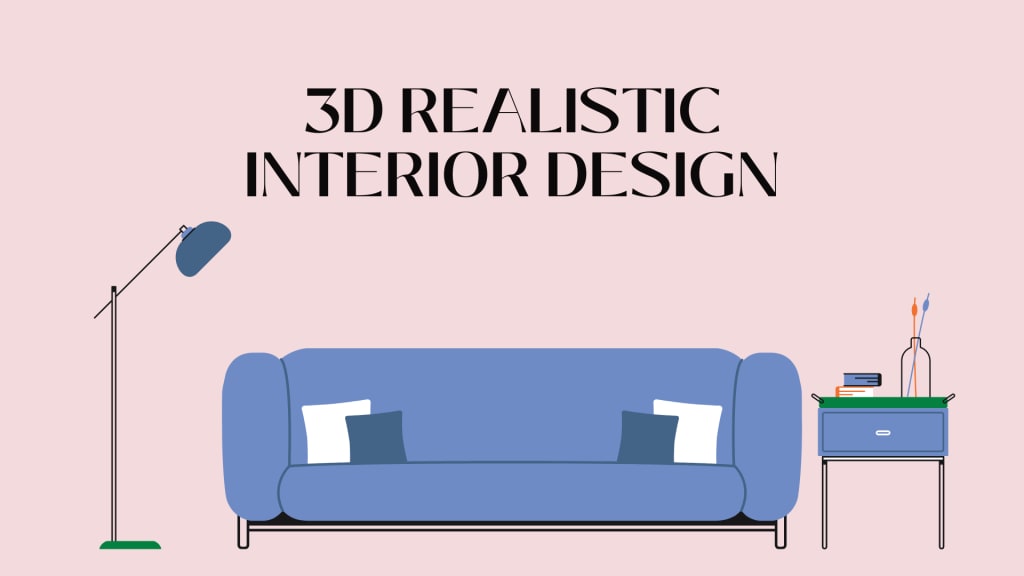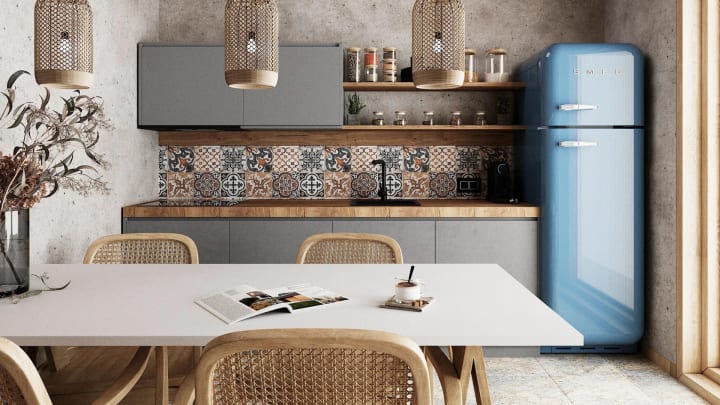What is AI Interior Design?
Discover how AI interior design solutions can help you create your dream home with personalized and professional designs.

Interior design has evolved distinctly over the years, reflecting different eras of taste and style and based on the preferences of society. It is transitioning from manual design methods to advanced digital tools.
Traditionally, designers relied on hand-drawn sketches, physical models, and face-to-face consultations, which is a time-consuming activity. With the advent of Computer-aided design software (CAD) allowed the designer to streamline the process and enhance the accuracy of creating room renderings.
The integration of AI in home design has further revolutionized the industry. AI-powered platforms such as v-render.be, arkdesign.ai , and maket.ai offer unprecedented levels of efficiency and customization. These tools generate innovative ideas, making the design process faster and more intuitive.
A survey conducted by Houzz found that 49% of homeowners are open to using AI tools for their home renovation projects, indicating a significant shift towards modern, tech-driven design solutions.

How AI is Transforming Interior Design
AI design tools such as NeROIC, DPT Depth, Ponzu allow designers to create highly detailed and accurate representations of spaces. These 3D modeling tools are being used across various fields, including virtual reality, video games, 3D printing, and interior design.
These tools assist in tasks ranging from conceptualization to rendering, providing real-time AI-powered rendering and instant photorealistic renders.
Grand View Research report shows the market of virtual reality in interior design is growing at a compound annual growth rate (CAGR) of 37.2% from 2020 to 2027. This technology has an increasing demand for realistic and immersive design experiences that AI-powered VR and 3D modeling tools provide.
Research from McKinsey & Company indicates that AI algorithms can increase the efficiency of space planning by up to 30%, making them invaluable in creating functional and beautiful interiors.
>> Get stunningly realistic interior renderings today!
Key AI Technologies in Interior Design
Machine learning algorithms analyze large datasets, including social media activity, design publications, and consumer preferences, to predict upcoming trends. For instance, by processing data from platforms like Pinterest and Instagram, machine learning can identify patterns and emerging styles that are gaining popularity.
Augmented Reality (AR) and Virtual Reality (VR) technologies are transforming client interactions by providing immersive design experiences. Virtual home staging and AI staging tools allow clients to explore their redesigned spaces in a virtual environment, giving them the final result look and feel.
Furthermore, Natural Language Processing (NLP) enables AI systems to gather and interpret client preferences with remarkable accuracy. By analyzing client feedback, emails, and questionnaires, NLP helps designers understand the specific needs and desires of their clients.
According to a report by Goldman Sachs, the AR and VR market in the real estate and interior design sectors is expected to reach $2.6 billion by 2025.
>> Get stunningly realistic interior renderings today!
Future Prospects of AI in Interior Design
AI tools like MidJourney can help visualize spaces, inspire creativity, and simplify design decisions. However, they are not yet capable of replacing human designers for detailed project management and practical implementation. Technology is considered a valuable tool for conceptualizing designs, but it is still in its infancy and often requires human refinement.
However, AI will change the job market for interior designers. Some tasks will be automated, making certain jobs less common. However, new jobs will emerge that focus on working with AI tools. Designers will need to learn new skills, like how to use AI software and interpret data.
World Economic Forum reported that 85 million jobs may be replaced by automation by 2025, but 97 million new roles will emerge. Designers who can blend creativity with technology will be in high demand.
>> Get stunningly realistic interior renderings today!
Conclusion
AI tools help designers create beautiful and personalized spaces. They can predict trends and suggest the best materials and layouts.
Human designers and AI tools work best together. AI can handle the heavy lifting and data analysis. This frees up designers to focus on creativity. It's important for designers to embrace AI. It can help them be more innovative and productive.
The future of AI in interior design is positive. AI will continue to improve and offer new possibilities. Designers should stay informed about AI advancements. Using AI can lead to extraordinary and creative designs. Embracing AI means staying ahead in the design world.
About the Creator
Waqee Ullah
I'm a writer and fact finder helping businesses grow through compelling content. : Book My Services here: [email protected]
Enjoyed the story? Support the Creator.
Subscribe for free to receive all their stories in your feed. You could also pledge your support or give them a one-off tip, letting them know you appreciate their work.






Comments
There are no comments for this story
Be the first to respond and start the conversation.